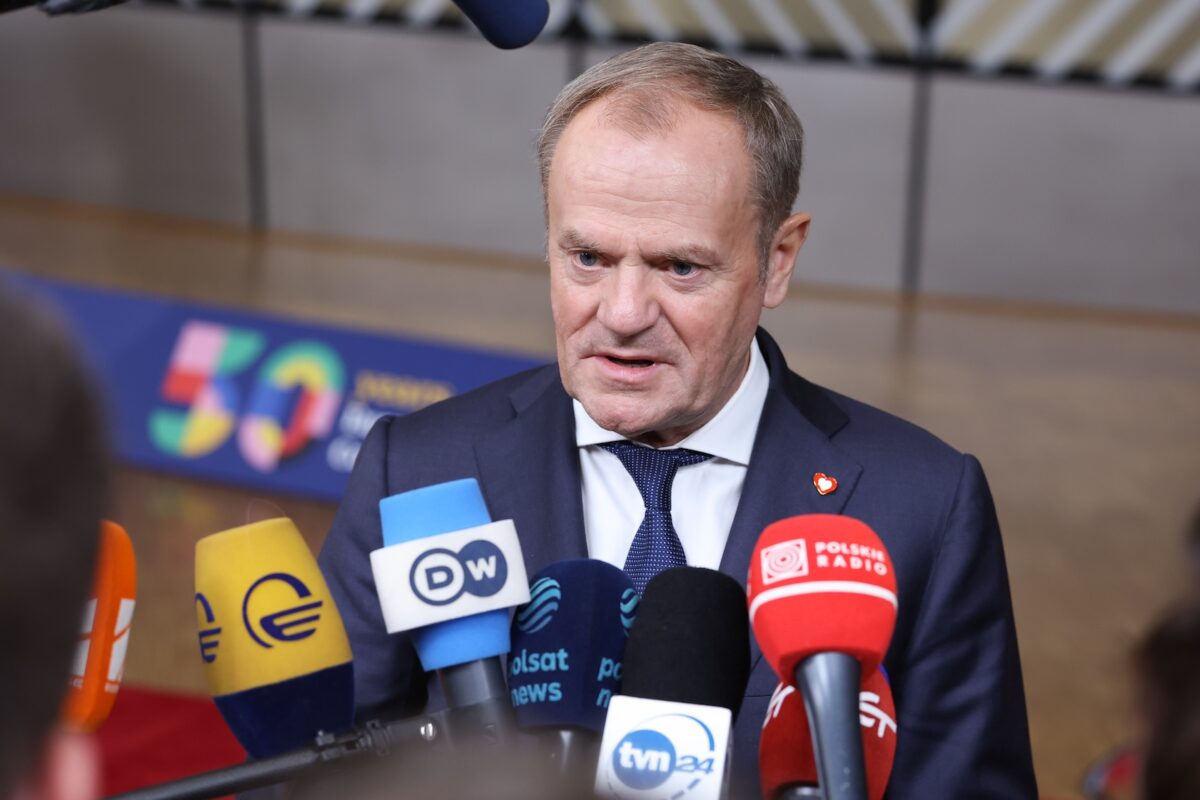Poland’s liberal and pro-European prime minister Donald Tusk formed his government in December 2023, marking the end of eight years of national-conservative rule under the Law and Justice party.
Leveraging his strong networks in Brussels—built during his first tenure as Polish prime minister (2007–14), as president of the European Council (2015–19), and head of the European People’s party (2019–22)—he has succeeded in bringing Poland back into the bloc’s core decision-making processes.
Holding the rotating presidency of the Council of the European Union since January 2025, amid ongoing geopolitical turmoil and uncertainty over transatlantic relations, Poland finds itself in the spotlight.
Tusk has already demonstrated influence over European policy, and with political instability in Paris and Berlin, Warsaw is emerging as a key driving force within the Union. In this context, many Western observers believe the Polish prime minister will boost resolute action from the Twenty-Seven.
Certainly, foreign policy matters to Poles. Yet, it is not their only preoccupation. By the end of January 2025, only 32 per cent of Poles viewed the government positively, while a clear majority (55 per cent) had a negative opinion—a four-point increase compared to the end of 2024.
Even more concerning are the personal criticisms addressed to Tusk directly, with 56.3 per cent viewing him negatively—placing him among the most divisive political leaders. The power Tusk projects on the European stage cannot conceal the mixed sentiments at home.
The labours of Donald Tusk’s government
One of Tusk’s most complex objectives is re-establishing the rule of law. The methods of his justice minister, Adam Bodnar, are a source of frustration. The extensive consultations and legal analyses he has ordered prolong the process, while the most energised parts of the electorate are demanding swifter accountability for abuses committed by high-profile figures from previous governments, such as Jarosław Kaczyński, Antoni Macierewicz, Zbigniew Ziobro, or Michał Dworczyk—to name a few.
A significant blow to the government’s effectiveness was the affair around MP Marcin Romanowski. In December 2024, a district court ordered his detention, but Romanowski managed to flee to Hungary, where he obtained political asylum.
On top of demonstrating flaws in the efficiency of the judicial system, his escape triggered a new diplomatic crisis between Warsaw and Budapest. According to the polls, 54.5 per cent perceive the current re-establishment of rule of law negatively—some believe it is too slow, while others see it as a vendetta, mirroring the methods of predecessors.
Indeed, the current government faces a critical challenge: setting an example of democratic integrity. The December 2023 takeover of public media by the liberals—particularly public television, which had previously served as a propaganda tool for the Law and Justice party—was abrupt and controversial.
Since then, a long-awaited media reform remains pending. While the quality of public television has significantly improved, the disproportionate share of airtime favouring liberals over other parties remains an issue, underscoring the need to accelerate the depoliticisation process.
Similarly, the decision to designate two private TV broadcasters (TVN and Polsat) as ‘strategic state assets’ has raised constitutional concerns. This decision was made to block their potential acquisition by politically backed foreign actors (notably investors from Hungary linked to Viktor Orbán). Yet some experts point out that considering TVN as a ‘strategic state asset’ is problematic as it is owned by an American group, is not a company with the participation of the State Treasury, nor has a state legal entity.
Growing frustration
Exemplarity also applies to personnel. The new government, elected on a promise to bring higher standards to Polish politics, has already faced scandals that undermine its credibility.
Dariusz Wieczorek was forced to resign as minister of education after failing to disclose all his assets in his financial declaration, while Minister of Equality Katarzyna Kotula is under scrutiny for allegedly misrepresenting her education and professional experience in official biographies.
Moreover, despite Tusk’s pledge to combat nepotism and state capture—problems that had reached unprecedented levels under Law and Justice—media reports have raised concerns about questionable appointments at the state-owned company Totalizator Sportowy, where key director-level positions were filled without open competition.
Legislative efforts on abortion, a highly sensitive issue in Poland since 2020, remain long-awaited. The promise to legalise abortion up to the 12th week of pregnancy has yet to be fulfilled—unsurprisingly, given the government’s fragile parliamentary majority on the matter and the near-certain veto of President Andrzej Duda, who remains in office until May 2025.
Meanwhile, progress on alternative measures has stalled. The adoption of a bill decriminalising abortion and another restoring 1993 legislation (which is slightly less restrictive to the current law) is still pending. A breakthrough is only expected after the presidential campaign.
This delay has led to growing frustration among young people, women, and both leftist and liberal voters.
Some success
Finally, deeper structural issues persist in Polish society, particularly linked to the economy, housing access, healthcare quality, and renewable energy development. These challenges cannot be solved with the wave of a magic wand. However, after more than a year in power, Tusk’s government will need to step up its efforts to deliver meaningful progress in these areas this year, although budgetary constraints may make the task more difficult than expected.
Despite these challenges, Tusk’s government has achieved significant reforms. These are noteworthy, especially since they were obtained despite an eclectic majority and a hostile president. Tusk’s government nevertheless struggles to communicate its successes.
The unblocking of EU recovery funds, the rollout of social measures (such as salary increases for teachers and public sector employees), and support for families (including reimbursement for in vitro fertilisation and financial aid to help parents returning to work cover childcare costs) are all notable achievements.
Tusk’s camp must develop a stronger communication strategy and urgently appoint a government spokesperson—an essential role sorely missing in his team.
Can Tusk correct course before the presidential election?
Back in October 2023, a historic mobilisation and wave of enthusiasm allowed pro-European parties to form a government following parliamentary elections. Although that core electorate remains engaged, there are growing concerns among liberal circles about an erosion of support among groups that were decisive in the election, such as young people and women.
The large portion of undecided voters (up to 15 per cent) is another variable that raises unpredictability heading into the presidential election on May 18.
As Law and Justice will seek to turn the vote into a referendum on Tusk’s government, liberal presidential candidate and Warsaw Mayor Rafał Trzaskowski will need to carefully consider how closely he wants to associate himself with Tusk’s government record to secure a crucial political victory.
Photo: Donald Tusk at a meeting of the EU Council in December. © European Union.







